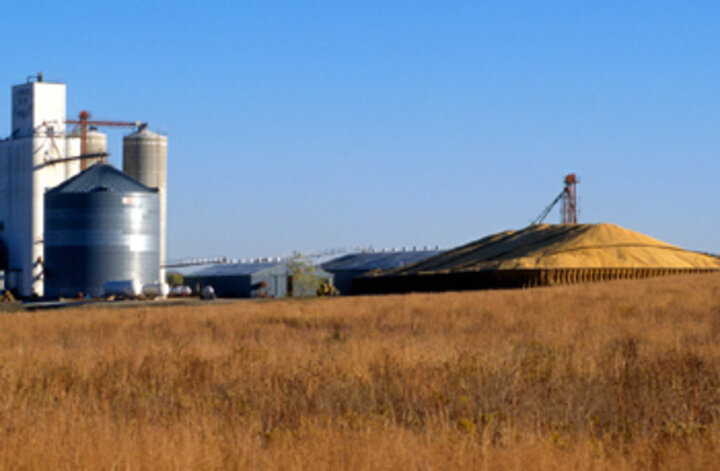September 28, 2007
|
Temporary storage may be needed this year until grain can be moved into more permanent storage or sold. There are several options when considering temporarily storing grain. (The following story is being reprinted from the October 22, 2004 CropWatch.)
Modifying Existing Farm Buildings
If temporary/emergency grain storage is needed, putting a crop in a building is better than putting it out in the open. If bin space is full, pole barns and machine sheds can provide good grain storage if they're prepared correctly and not overloaded. An excellent reference on modifying buildings is North Dakota State University publication AE-84, Temporary Grain Storage by Kenneth J. Hellevang.
Buildings used for grain storage should be in a well-drained site. Lay a sheet of 6-mil or heavier plastic on the floor to reduce the migration of moisture from the soil or through cracks in concrete floors into the grain. Ordinary machine sheds are not designed to withstand the pressures that are exerted on the sidewalls by piled grain. Avoid piling grain more than two feet deep against the side walls of machine sheds.
One good temporary grain storage solution is to construct a temporary "bin" inside an existing shed using steel grain bin rings placed on the concrete floor. These rings are self supporting and are made to withstand the stresses imparted by grain. A temporary "bin" 36 feet in diameter and 8 feet high will hold 6,514 bushels level full and if peaked to the maximum height 7.6 feet above the top ring (total height 15.6 feet high) would hold nearly 8,600 bushels.
Outside Storage
|
||||||||||||||||||||||||||||||||||||||||||||||||||||||||
If grain must be piled outside on the ground, drainage is crucial. The pile should be on high ground with the earth crowned under the pile. Placing plastic on the ground is absolutely essential to keep soil moisture from migrating into the grain. Pile only dry grain (not more than 14% moisture). Cooling the grain with aeration prior to piling improves the chances for success. If the grain will be stored for more than a month, cover the pile with plastic to shed precipitation.
Since site preparation is so critical, it would be useful to know the size of pile necessary to store a given quantity of grain. Grain that is elevated using an auger and then dumped into a pile will come to rest in a cone-shaped pile and will come to rest at predictable angles, as shown in Table 1. Since volume is a function of the height and diameter of the cone-shaped pile, one can estimate the required diameter of a pile of grain necessary to hold a desired quantity (bushels) of grain provided the angle of repose is known for the particular type of grain.
The author has worked out a simple equation which can be used to predict the diameter of a conical pile of grain to hold any given quantity (bushels) of grain. Only two variables are necessary for the computation: the number of bushels and the base conversion factor (BF) from Table 1.
D(ft) = (Bu x BF) 1/3
Thomas Dorn
Extension Educator based in Lancaster County
|

